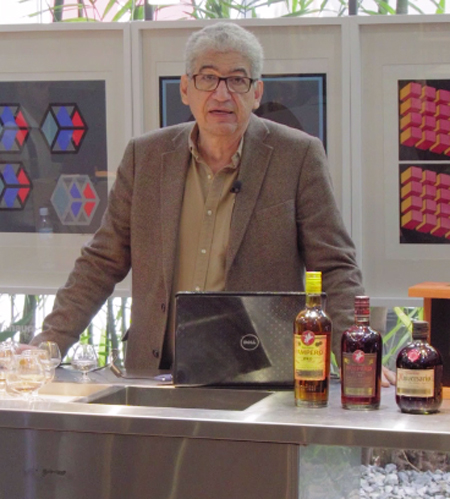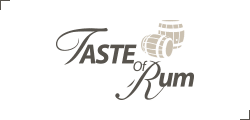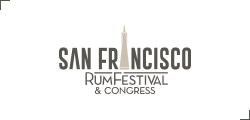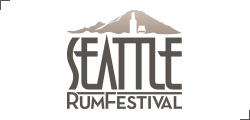Rum Connoisseur Interview Of the Week LUIS FIGUEROA Maestro Ronero Ron Pampero

Rum Connoisseur
Interview Of the Week

LUIS FIGUEROA
Maestro Ronero Ron Pampero
1. Who is Luis Figueroa?
I am Venezuelan, born on July 6, 1957 in Barquisimeto. I am married with Luigina Capobianco 36 years ago, with three children and two beautiful grandchildren. I am Chemical Engineer, with a specialization in Quality Management, a Master’s Degree in Administration and a Master’s Degree in University Teaching. With 36 years of graduation, the last 26 years have been dedicated to the rum industry.
In the rum industry I have worked in almost all areas of industry of technology and administration: Organization and methods, Auditing, Systems, Sales Administration, Purchasing, Imports and Exports, Distribution, Transportation, Industrial Safety and Physics. Planning, Quality, Manufacturing, Development of New Products among others. I am a Maestro Ronero Certified for FONPRONVEN for the DOC Ron de Venezuela for the Venezuelan brands Cacique and Pampero. I am a Global ambassador of both brands.
2. Biggest Achievement you personally feel you have accomplished for the rum industry
I have worked as Maestro Ronero in a stellar era for rum. I have had part of the responsibility to preserve a deeply rooted Venezuelan culture and tradition. I am a custodian of old formulas and rum making processes, just as they were designed by our predecessor rum masters, but I have also created new products and included new variants in the processes that have been successful in the markets of our brands. Another contribution that I personally value has been the opportunity I have had to bring the voice of Venezuelan rum and its virtues around the world and of course in a very special way of the rums that are elaborated such as Cacique and Pampero. I have spoken as a rum ambassador in more than 45 countries, with translations in Thai, Korean, Vietnamese, Greek, French, German, Italian, Japanese, Portuguese, among other languages, in a number of tastings with consumers, bartenders, customers and the general public and in all those opportunities has highlighted the interest in our products. I have participated as a guest by local and foreign universities to give courses on the elaboration of rum based on the premise that we make rums, defined by many, as the best in the world. I have written about rum in order to bring relevant information about this drink to the consumer and general public. I have participated in the design of the technical regulations with which the quality of rum is controlled in Venezuela as well as in other countries. I have supported the modernization of the processes to elaborate our rums and raise their quality while preserving the relevant aspects of the traditional way of making rum in Venezuela. Personally, I think, my greatest achievement in the rum industry, has been to be part of the industry team, representing Pampero and Cacique rum, which obtained the Ron de Venezuela Controlled Denomination of Origin, which is the greatest recognition in terms of quality that a food grade product can obtain.
3. What did you fall in love with rum and when did it happen?
The rum has been part of my family history; it was not something foreign to my life before entering to work in this wonderful world. My father worked for almost 30 years in the distribution of Pampero with the company Tamayo & Cia, who owned this brand for many years before Diageo. And on the other hand my wife, Chemical Engineer and also taster, was Manager of Quality Control of Licorerías Unidas S.A., a company that gave life to Cacique and that produced it before being sold to Diageo. In the family, therefore, rum has always been present. I studied Chemical Engineering, a role that aims to transform raw materials into sub products or finished products. In 1992 my wife, also a Chemical Engineer, had already retired from working in Cacique’s distillery and one day she met with the general manager who asked her if she knew any engineer with a specialization in administration because they had a vacancy, to which she answered “I have one, tomorrow I sent it to your office”. And there began my adventure for rum. I initially worked in administrative and sales areas and then move on to logistics, quality and manufacturing issues. In this journey the passion for rum grew and became a passion. Passion that has not decayed and that I maintain for this magical world.
4. What is that thing that makes you want to continue in the rum industry?
Because my passion for rum. Because the passion to maintain a tradition and a centennial culture. Because the passion for making the best rums in the world. As I said before, it’s a magical world. I think I have one of the best jobs in the world and I enjoy it to the fullest.
5. Favorite Drink + Recipe.
There is not a single favorite drink. We must remember that one virtue of rum is diversity and its mix ability.
The favorite drink also depends on the particular moment for your enjoyment. And the recipe has to do with the tastes and the moment. Something important to remember is that the flavor of rum is based on acid, sweet and bitter. You have to look at these three basic flavors for the final balance. A mixture is harmony of these flavors. Rum is acid because it is aged. When we age rum acids are produced that lower their ph. The rum is bitter because of the extracts it takes from the wood in that period of aging. And it is sweet because of its origin since it comes from sugar cane.
In a relaxing moment I enjoy rum with tonic water and orange peel. Cacique 500 with orange peel and tonic water is fantastic. You take a long glass, and you perfume it by squeezing an orange peel (orange or yellow color) over the edge of it. You smell the glass and if the smell is deep, the drink will make you fall in love and it will be perfect. Add ice, 50 ml of Cacique 500 and add tonic water to taste.
In a moment to share with friends and make the meeting something fun, an Amazon Daiquiri made with Cacique Añejo. Pour in a blender, 50 ml of Cacique Añejo, 50 ml of lemon juice, two tablespoons of sugar, lemon zest, a bunch of coriander, a lot of ice and liquefy about to frappe, serve in a daiquiri glass.
If you are a rum lover and the moment allows you, surprise your friends with the rum flavors ritual. Cut a lime in quarters, impregnate one of their faces with coffee powder, turn the lime quarter and now impregnate the other side with sugar. Prepare a shoot with Pampero Selección 1938. Bring the lime to the mouth and bite, squeeze its juices, these will drag the solids to the papillae and activate the flavors of the rum, the acid, the bitter and the sweet, by having your palate full these flavors take a small sip of Pampero Selección 1938 and look for the harmony of all those flavors. The ritual is a unique experience. For special moments a Pampero Aniversario served in a short glass with two ice stones. A unique enjoyment
6. Where do you see the rum industry today and in the next 5 years?
The rum lives two moments continuously: today and tomorrow. You cannot make rum without seeing the future and not only five years but beyond. Those of our rums up to 12 years old and we are going to bottle in 2031 we are distilling today. The rum with 12 years old we are mixing and bottling this year were in our 2007 production plans. This is how this industry works, with patience but without pause. It is an industry that continually bets on the future.
7. What do you think needs to happen to grow the Premium category of rum?
The category has been growing and this is due to the work that the industry has done to communicate attributes and a fantastic job in the development of packaging. In the case of Venezuelan Rum, and especially the brands that I represent, we have focused a lot on communication quality attributes recognized not only locally but outside the country. Not in vain, Pampero, has been the Venezuelan rum that established in 1954, in our country, new quality standards that the whole rum producer sector then followed and that are maintained to this day.
8. Which Rum would you recommend to a person that:
-Likes Scotch Whiskey: Cacique Leyenda
-Bourbon Likes: Pampero Aniversario
-Likes Gin or Vodka: Pampero Selección 1938 or Cacique 500 with tonic water but replacing the lemon peel with orange peel
-Likes Cognac: Cacique Antiguo.
9. Share some (2-3) of your mentors and how have you helped
Throughout my professional career there are many people with whom I have interacted to learn from this wonderful world. Even today I continue to learn from colleagues and related. I do not want to name one in particular so as not to leave others out. There are several decades in this forge of a very varied knowledge and skills. Remember that a Master Blender is not only related to a sensory ability, that perhaps that is the most obvious for most. Master Blender, in the Venezuelan concept, is one that is formed from the purchases of raw materials and packaging, through design of processes and products, short and long term planning, control and quality assurance, design of regulations, among many other variables that combine to have a product of certain characteristics in a shelf. Something integral and deep knowledge that makes you interact with very diverse people throughout your career. It is definitely a multifunctional teamwork where we all support each other.
10. What 3-5 things do you have in your bucket list for the next 12 months?
Professionally. Participate in various projects of processes and products. I will have tasting activities and trips to support brands.
Personally. Study Italian.
Familiarly. Celebrate the coming of my third grandchild.
11. Any last words?
Taking advantage of this opportunity that gives me this interview, I think it is important to review the reason for the virtues of Venezuelan rum and in particular the rums that I elaborate, such as Cacique and Pampero.
It is good to make known why Venezuelan rum is defined as one of the highest quality in the world. In this particular I highlight the four “secrets” of our rum.
First of all, we have very high quality raw materials in Venezuela. Our cane molasses is the highest content of sugar in the world, which is synonymous with clean alcohols, that is, sensory clearly shows the trace of the raw material that gives rise to it. Another important raw material is Water, whose characteristic is that it is pure what allows to be a means of dilution of the molasses without adding odors or flavors.
The second aspect is our variety of distillations, to achieve light, semi-heavy or heavy alcohols by using various equipment such as columns, kettle batch or old copper stills. We have 6 different types of alcohol in our process.
The third secret and very relevant is the Venezuelan geography. We are a Caribbean, Amazonian, Atlantic, Andean and Equatorial country. This unique geography confluence allows us to have sugar cane honeys high in sugar, which is excellent for the rum making process. But on the other hand, this geography determines a climate, in terms of temperature and humidity, which makes the aging of rum one of the most intense in the world, which allows reaching a unique sensorial quality. 30 ° C and 90-95% of relative humidity generate a climate of tropical forest in the areas where our rums age. This is unique. This explains technically (physic-chemically) because 3 to 4 years of aging of our rums equals the aging of a Scotch whiskey of 12 years. On the other hand, the geography in combination with oak barrels of diverse previous uses (Bourbon, Scotch or Sherry) allow to achieve differentiated and extraordinary rums. In the Cacique and Pampero warehouses I manage more than 70 different rums that will be combined later.
Finally, the art of mixing is based on the expertise of the Venezuelan Rum Masters, which has been recognized since the end of the 19th century and which has been transmitted from generation to generation; this makes the rum mix a fantastic sensory palette. It should be noted that this art allows us both in the Pampero House and in the Cacique House to have different sensory gradients between variant and variant, something difficult to find in most of the others producers.
12. How can people learn more about you? Website? Social Media Page
I have not ventured into any social media for the responsibility and time required to attend this modality. I think I would not have time to fulfill it as it should be. My vision of how a rum makes a Master Blender can be read in a chapter on rum production that I wrote for a book that I consider, if not the best, one of the best books about rum and rum history in the world: Al son del Ron, by José Ángel Rodríguez.












